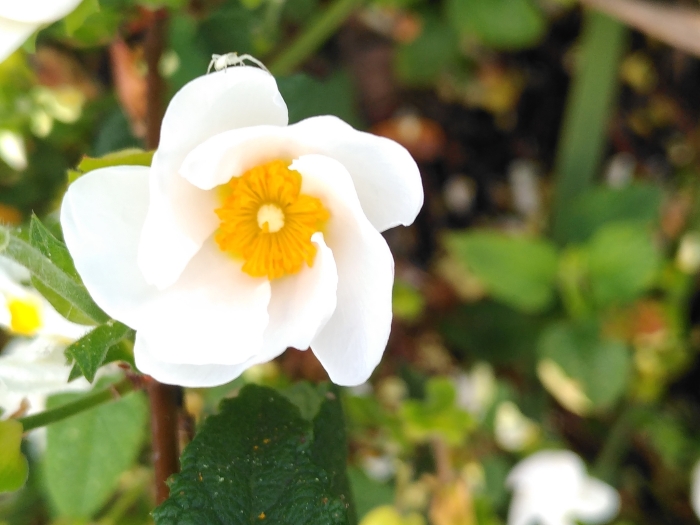White Rockrose
(Cistus ×corbariensis)
White Rockrose (Cistus ×corbariensis)
/
/

© Yves Bas
CC BY 4.0
Image By:
© Yves Bas
Recorded By:
Copyright:
CC BY 4.0
Copyright Notice:
Photo by: © Yves Bas | License Type: CC BY 4.0 | License URL: http://creativecommons.org/licenses/by/4.0/ | Uploader: yvesbas | Publisher: iNaturalist |







Estimated Native Range
Summary
Cistus ×corbariensis, commonly known as White Rockrose, is a hybrid perennial shrub native to the Mediterranean region, where it thrives in open woodlands and on rocky slopes. It typically grows at a moderate rate to a height of 3-4 feet (0.9-1.2 meters) and a width of 4-5 feet (1.2-1.5 meters). The plant has a bushy habit with evergreen foliage that provides year-round interest. Its white flowers are particularly showy, with each bloom lasting just one day, but the plant produces a succession of flowers throughout the spring and summer, creating a long-lasting display. The flowers are complemented by its gray-green leaves, which add to the plant’s overall aesthetic appeal.
White Rockrose is valued for its drought tolerance and ability to thrive in poor soils, making it an excellent choice for xeriscaping and Mediterranean gardens. It is often used in mass plantings, as a ground cover, or in rock gardens due to its low maintenance requirements and ability to suppress weeds. While it prefers full sun, it can tolerate light shade and is adaptable to a range of soil types, provided they have good drainage. It is generally free from serious pests and diseases, but it can be susceptible to root rot if overwatered. This plant is not known for aggressive roots or significant invasiveness, but it should be noted that it can self-seed in ideal conditions.CC BY-SA 4.0
White Rockrose is valued for its drought tolerance and ability to thrive in poor soils, making it an excellent choice for xeriscaping and Mediterranean gardens. It is often used in mass plantings, as a ground cover, or in rock gardens due to its low maintenance requirements and ability to suppress weeds. While it prefers full sun, it can tolerate light shade and is adaptable to a range of soil types, provided they have good drainage. It is generally free from serious pests and diseases, but it can be susceptible to root rot if overwatered. This plant is not known for aggressive roots or significant invasiveness, but it should be noted that it can self-seed in ideal conditions.CC BY-SA 4.0
Plant Description
- Plant Type: Shrub
- Height: 3-4 feet
- Width: 4-5 feet
- Growth Rate: Moderate
- Flower Color: White
- Flowering Season: Spring, Summer
- Leaf Retention: Evergreen
Growth Requirements
- Sun: Full Sun
- Water: Low, Medium
- Drainage: Fast, Medium
Common Uses
Border Plant, Drought Tolerant, Groundcover, Low Maintenance, Rock Garden, Showy Flowers, Street Planting
Natural Habitat
Native to the Mediterranean region, thriving in open woodlands and on rocky slopes
Other Names
Common Names: Cistus ’Corbariensis’
Scientific Names: Cistus ×corbariensis , Cistus ×corbariensis , Cistus ×corbariensis var. cordatus , Cistus ×corbariensis var. lanceolatus , Cistus ×corbariensis var. ovatus , Cistus ×hybridus f. corbariensis
GBIF Accepted Name: